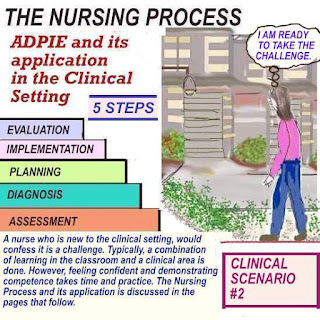STROKE ASSESSMENT AND BRAIN LOBE INVOLVEMENT - QUIZ QUESTIONS
Scenario 1: Sam had a stroke involving the
occipital area of the brain. His vision was
affected. He was advised by his doctor to
give up his driving privileges. He refused
and drove into a tree.
Scenario 2: Tina's stroke involved the parietal
lobe. She is having difficulty with distinguishing
right from left and math calculations.
Enjoy the video: The stroke patient
An eye exam may become necessary to check
for visual deficits. Visual acuity testing is done
from about 20 feet away.
Scenario 3: Tom had a stroke which involved
the temporal lobe. He now has difficulty with
his hearing and memory loss.
Scenario 4: Ellen was diagnosed with a brain
tumor in the frontal lobe. A tumor resection
was done. Ellen is now showing signs of
impaired judgement and unsteady gait.
The human brain is made of 2 cerebral
hemispheres: left and right. The corpus
callosum forms a bridge that joins them
together. Each hemisphere has 4 lobes.
The CNS is the Central Nervous System and is comprised
of the brain and spinal cord. The PNS is the Peripheral
Nervous System and is made of the nerves outside of
the CNS.
occipital area of the brain. His vision was
affected. He was advised by his doctor to
give up his driving privileges. He refused
and drove into a tree.
Scenario 2: Tina's stroke involved the parietal
lobe. She is having difficulty with distinguishing
right from left and math calculations.
Enjoy the video: The stroke patient
An eye exam may become necessary to check
for visual deficits. Visual acuity testing is done
from about 20 feet away.
Stereognosis is the normal ability to identify
objects by touching.
objects by touching.
Quiz questions
1. Which area of the brain is responsible for vision?
1. Which area of the brain is responsible for vision?
2. What is the parietal lobe responsible for?
3. What testing is done after a stroke?
4. What is stereognosis?
Can you identify brain lobe involvement after a stroke?
the temporal lobe. He now has difficulty with
his hearing and memory loss.
Scenario 4: Ellen was diagnosed with a brain
tumor in the frontal lobe. A tumor resection
was done. Ellen is now showing signs of
impaired judgement and unsteady gait.
The human brain is made of 2 cerebral
hemispheres: left and right. The corpus
callosum forms a bridge that joins them
together. Each hemisphere has 4 lobes.
Millions of nerve cells called neurons
originate in the brain and transmit
information all over the body.
originate in the brain and transmit
information all over the body.
The nerve pathways in the brain cross over.
This results in the left brain controlling the
functions of the right and vice versa.
The frontal lobe, parietal lobe, temporal
lobe, and occipital lobe.
Frontal Lobe: responsible for motor activity
and judgement/reasoning.
Parietal Lobe: responsible for distinguishing
right and left; and math calculations
Temporal Lobe: responsible for memory and hearing
Occipital Lobe: responsible for vision
This results in the left brain controlling the
functions of the right and vice versa.
The frontal lobe, parietal lobe, temporal
lobe, and occipital lobe.
Frontal Lobe: responsible for motor activity
and judgement/reasoning.
Parietal Lobe: responsible for distinguishing
right and left; and math calculations
Temporal Lobe: responsible for memory and hearing
Occipital Lobe: responsible for vision
The CNS is the Central Nervous System and is comprised
of the brain and spinal cord. The PNS is the Peripheral
Nervous System and is made of the nerves outside of
the CNS.
Cranial nerves are part of the PNS.
The optic nerve does not seem to be included.
The optic nerve does not seem to be included.
Quiz questions
1.What is the human brain made up of?
2.What are the lobes of the cerebral hemispheres?
3. What are neurons?
4. What is each lobe responsible for?
5. What are the CNS and PNS?
3. What are neurons?
4. What is each lobe responsible for?
5. What are the CNS and PNS?
Scenario: Ann has a pituitary adenoma. She can only
see half of anything in her visual field.
see half of anything in her visual field.
What is hemianopia?
Hemianopia is a loss of vision (blindness) in half
of the visual field. This may occur in one or both eyes.
of the visual field. This may occur in one or both eyes.






Comments
Post a Comment